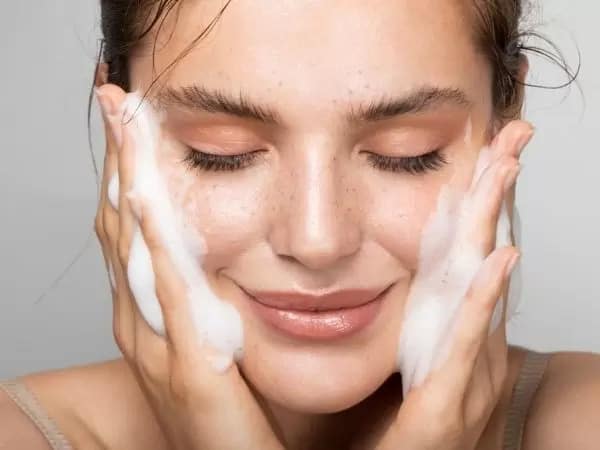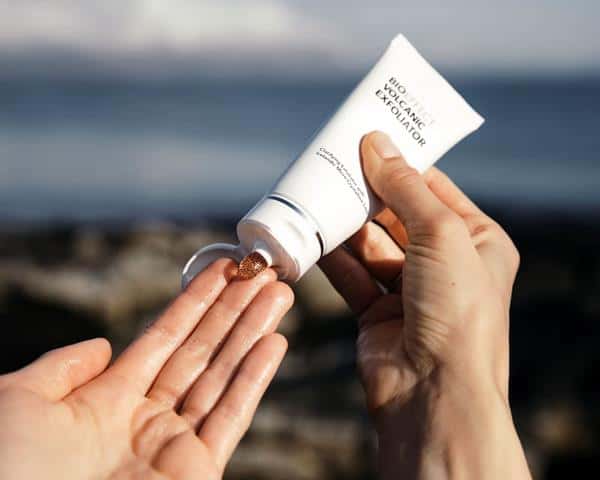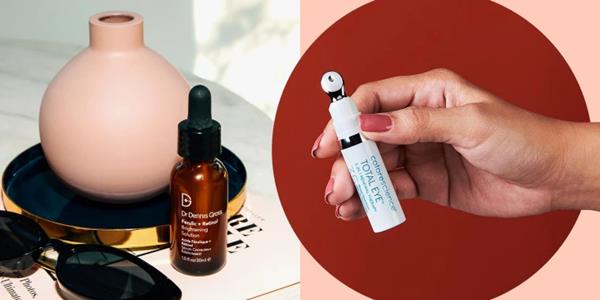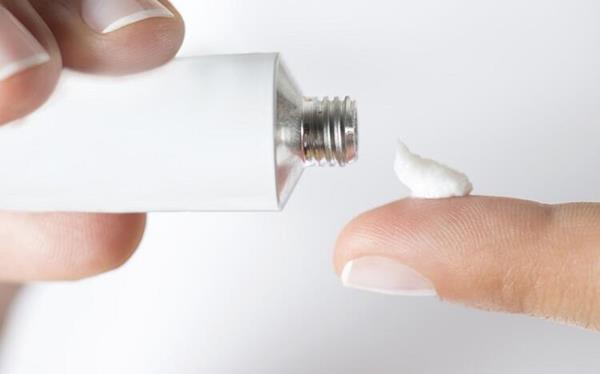Taking care of your skin is not an obligation and it shouldn’t feel like one either.
Considering the prime real estate your skin takes up on your body as its largest organ, it makes sense to protect it while it’s protecting you.
In general, good skin means clear skin – free of acne blemishes, and dark spots. But you may have your own definition of what it means to you.
What is a Skin Care Routine?
Anyone over the age of 18 should implement an AM and PM skin routine. And starting earlier is even better. It just means you are taking a moment to clean and treat your skin, whether it’s for five minutes or 20.
Your night routine will likely be a bit more complex if you are a makeup wearer, but a good skincare routine is an easy one. Something you will continue regularly.
Products should be applied in order of consistency. So, thin serums will go first, while thicker creams and masks are applied last.
The mainstays in every regimen don’t change much: cleansing, exfoliating, toning, serums, and moisturizing. Plus, there are medicated ointments or treatments, and sunscreen.
Step 1: Cleanser

You need that blank canvas before anything can be laid on top of it. But, you don’t want to strip your skin. Biochemist Dr. Andrea Suarez, known as Dr. Dray on YouTube, says in her video, that she cleanses twice.
She begins her skincare routine with a double cleanse, which starts with an oil cleanser, followed by a gentle water cleanser.
She says this two-step process allows the film build-up from cosmetics and natural oils and sebum to be dislodged and removed. It also breaks up any water-resistant sunscreen as well.
So even if you don’t wear makeup, Dr. Dray says, it’s beneficial to do an oil cleanser first because it not only removes oil-based products but lessens disruption to the natural skin barrier.
Dr. Suarez’s double cleanse is backed up by science. A medical paper published in the Journal of Cosmetic Dermatology in 2019 shows a strong correlation to users’ skin being less dehydrated after removing waterproof sunscreen, in particular, with an oil-based cleanser.
It doesn’t matter what specific oil you use, since it will be washed off with the second cleansing. Make sure to emulsify the oil by rubbing it in circular motions on the face and then rinsing well with water.
Most dermatologists today will tell you to use fragrance-free cleansers. Many scented products can irritate the skin.
Dr. Suarez also says that the double process of cleansing acts as gentle exfoliating since it sloughs off dead skin cells.
Moving on to the body, fancy body washes and soaps aren’t necessary. Concentrate on areas with skin folds like the armpits and the buttocks.
Also, focus on areas that may be experiencing breakouts like the upper back. Otherwise, most other areas of your body do not need to be soaped and lathered. That can lead to excessive skin dryness and even itchiness.
In the morning, it is not necessary to wash the face or body with soap. A simple spritz of water can revitalize the skin in preparation for hydration.
Step 2: Exfoliator

You should use an exfoliator at least twice a week, but it depends on what your skin is telling you. It removes dead skin that can clog the pores and make the skin appear dull.
Clogged pores can also lead to acne breakouts, dark spots, and flakey skin. An exfoliator tackles all of this while brightening the skin.
Exfoliators come in two main types: physical and chemical. Physical exfoliators use abrasive ingredients like sand to scrub away dead skin.
You simply apply the product and rub it over the face (avoiding the under eyes). Rinse well with water.
Chemical exfoliators use chemicals such as alpha hydroxy acid, beta hydroxy acid, or lactic acid to dissolve those dead cells as the product sinks into the pores.
A common way to apply these products is to pour them onto a cotton pad and wipe them over the skin. Let it dry and move on to the next phase of your skin care.
It’s important to not over-exfoliate. Too much physical exfoliation, in particular, can lead to tiny tears in the skin or red, irritated spots.
It may be better to stick to the nighttime for exfoliation as it sets the stage for the rest of your skincare products to absorb and be at their most effective.
Step 3: Toner
Next, is your toner, which helps to refresh the top layer of skin and bring back its healthy pH. Skin normally sits at 4.7 to 5.8 on the pH scale.
Water brings the acidity level up when it touches the skin and so, a toner can bring balance back, making it appear healthier.
Either spray a toner over the face or pour some onto a cotton pad and wipe gently. A toner can be used morning and night.
Step 4: Serum or Anti-aging Product

Now is the time to grab your serum. If you don’t have one, it’s worth including in your skin care regimen because it can be considered a pre-moisturizer.
Serums are lightweight and full of nutrients that can be easily absorbed into the skin. Depending on your skin’s current needs and your skin type, you should apply one daily.
If it’s a serum like hyaluronic acid which helps hold onto the water on the skin, apply it before your moisturizer.
It will work to make the skin look plump and firm. Squeeze out one or two drops into your palm and gently press your palm over all areas of the face.
Whereas a treatment like Tretinoin, a prescription retinoid, can be applied after a moisturizer due to its irritating qualities.
Retinoic acid, which is found in Vitamin A, has been studied and found to be highly effective for the treatment of acne, but more recently noted for its effect on photoaging.
These kinds of treatments have been shown to provide results even applied over a facial cream or lotion. Just be sure to wait for a few minutes for the moisturizer to have absorbed and there is no longer a slickness to the skin.
Step 5: Moisturise
This is an essential step in your skincare plan. It will keep your skin hydrated, and balanced and even correct any issues or problems you may be experiencing. Your skin will determine what kind of moisturizer to use.
If you’re getting out of the shower, try to quickly follow up with a body and face moisturizing. The steam is allowing the pores of the skin to open and be ready to accept the oils and beneficial compounds in the cream or lotion you will be using.
This will also prevent your skin from further water loss. Dr. Suarez says soaps and body washes can disturb the “lipid barrier” and make the skin dry.
The type and thickness of the moisturizer depend on your skin type: oily skin can take more liquid lotions and gels, whereas drier skin may require a thick cream moisturizer.
Look for body creams and lotions with petrolatum which acts to lock in water in the skin. Ceramides are also good as they contribute to the skin’s softness and pliability.
Panthenol can reduce inflammation and smooth wrinkles. It is also very hydrating and emollient according to Dr. Suarez.
Applying oil after your moisturizer is an extra step that some may find effective. It can help seal in the moisturizer, allowing all of its emollients to better seep into the skin.
Tip: if you have oily skin, you may be tempted to skip the moisturizer. Don’t do it. Your skin still needs to be hydrated and you may even see an improvement in oil production.
Step 6: Topical Ointment or Medicated Treatments

If you are managing acne breakouts or blemishes, then this will be your next step. This is also the time to concentrate on issues like rosacea or eczema.
Make sure your skin is dry to the touch at this point. Most topical acne treatments including retinoids, benzoyl peroxide, and azelaic acid should be applied sparingly in a dabbing motion.
Layering it over moisturizer can be a good way to prevent irritation, especially if the treatment is a new addition to your routine. However, if you prefer to apply them before moisturizing, you can do that as well.
Step 7: Sunscreen
This is arguably the most important product you will apply to your face. Even on a cloudy day, your skin is susceptible to UV rays that are so damaging. They can cause dark spots, dryness, and even skin cancer.
It’s your choice whether you use a mineral or chemical sunscreen. Mineral sunscreens include ingredients such as zinc oxide and titanium dioxide that sit on the skin.
Chemical sunscreens, on the other hand, absorb into the skin due to their chemical makeup including oxybenzone and avobenzone.
Make sure to apply the product to all areas of the face including those missed spots around the ears and under the eyes. The neck is another often missed area. Sun damage can lead to the neck looking discolored and wrinkled.
Tip: Make sure to leave some time for your sunscreen to settle on the skin before applying makeup or leaving the house. You will find it settles more invisibly into the pores after at least 15 minutes, leaving less of a white cast.
Finally
Developing an effective skincare routine will keep your skin happy and healthy. But, there’s another essential step that should be included in any skincare regimen: sleep. It’s underrated, but oh, so, beneficial.
Dr. Suarez says your skin reflects what’s happening inside the body, so it will look its best when you’re getting good shuteye.
Most people need a least eight hours of sleep to be classified as well-rested, so take a break from social media and work duties and your skin will thank you.
